Chapter 11 Fourier Series and Integral Transforms
In theory and application, it is often necessary to examine the relationship between a function and an orthogonal function system . Fourier series theory is to study this relationship on a finite interval. For the case where the interval is infinite, Fourier transform theory ( including Fourier transform , Laplace transform and other integral transforms ) , which is the generalization of this theory . This chapter focuses on the use of Fourier triangular series to represent functions on finite intervals, and a special integral form for functions on infinite intervals, such as Fourier transform , Laplace transform, Merlin transform, Hankel transform, etc. These are important contents of Fourier analysis .
Fourier analysis is an important tool in studying vibration and wave phenomena and solving mathematical and physical equations . It also shows in physics that arbitrary waveforms can always be spectrally decomposed, that is, the linear superposition of simple harmonics of different frequencies and amplitudes . The development of the fast Fourier transform in the 1960s created the conditions for the wide application of Fourier analysis in practice, and this chapter collects some of the content on this aspect .
§ 1 Fourier series
1.
Triangular series and Fourier series
[ Orthogonal function system ] A function system
![]() (1)
(1)
where each function is a real function defined on an interval or a complex-valued function of a real variable, if![]()
![]() (
m 1 n )
(
m 1 n )
The function system (1) is called an orthogonal function system on the interval , and is the conjugate function in the formula . If it satisfies the![]()
![]()
![]()
![]()
Then the function system (1) is called the standard ( canonical ) orthogonal function system above . For example![]()
![]()
is the orthogonal function system on the interval , where , the function system![]()
![]()
![]()
is the standard orthogonal function system on the interval .![]()
Set a given function system
![]() (2)
(2)
where the independent variable x takes a finite number of discrete values
![]()
satisfy

The function system ( 2 ) is called the standard orthogonal function system, where
![]()
For example take ![]()
![]()
It is a standard orthogonal function system .
[ Several types of trigonometric series ]
|
type |
expression |
|
|
real number _ cosine series Sine series |
where is a real constant |
|
|
plural _ |
in the formula |
|
[ Fourier series ] Let the function be absolutely integrable on the interval , and let![]()
![]()

Take the coefficients as a trigonometric series![]()
![]()
It is called the Fourier series, and is called the Fourier coefficient of![]()
![]()
![]()
![]()
![]() ~
~![]()
If the Fourier series converges point by point, and its sum is equal to ( except for a finite number of points ) , then the series (1) is called the Fourier expansion, denoted by![]()
![]()
![]()
![]()
Note: 1 o If it is absolutely integrable on the interval , then it must have its Fourier series, but it does not necessarily have its Fourier expansion ( refer to this section, IV for the conditions that can be expanded ).![]()
![]()
2 o If there is a triangular series on the interval that converges uniformly ( or convergently, that is, partially and point-to-point convergent and uniformly bounded ) to the function , then this series is the Fourier expansion of the function .![]()
![]()
![]()
If the two absolutely integrable functions on the 3 o interval , , are equal everywhere except for a finite number of points ( which can be extended to almost everywhere equal ) , then all the corresponding Fourier coefficients of and are the same .![]()
![]()
![]()
![]()
![]()
4 o definition , then the definition domain of the function can be extended to the entire number axis, and the integral interval for finding Fourier coefficients can be replaced with any interval of length, such as etc.![]()
![]()
![]()
![]()
2. Fourier series of
f ( x ) on other intervals
[ on interval ]![]()
![]() ~
~![]()
![]()
![]()
![]()
![]()
![]()
![]()
or
f ( x ) ~![]()
![]()
=![]()
In particular, if it is an even function, then b n = 0 , the obtained Fourier cosine series![]()
![]()
![]() ~
~![]()
If it is an odd function, then , the obtained Fourier sine series![]()
![]()
![]()
![]() ~
~![]()
[ on the interval [- l , l ] ]
![]() ~
~![]()
![]()
![]()
![]()
![]()
![]()
![]()
or
![]() ~
~![]()
![]()
When it is an even function or an odd function, as in the case of intervals, there are cosine series or sine series, respectively .![]()
![]()
[ on interval ]![]()
![]() ~
~![]()
![]()
![]()
![]()
![]()
![]()
![]()
![]()
or
f ( x ) ~![]()
![]()
Third,
the properties of Fourier coefficients
1 o The Fourier coefficients of the absolutely integrable functions converge to zero, i.e.![]()
![]()
![]()
In particular, if there is bounded variation in the interval , or monotonically rising bounded, or monotonic in the upper piece, then both![]()
![]()
![]()
![]()
If and their derivatives up to the order are bounded variograms on the interval, or both monotonically rising and bounded, or monotonically upper piecewise, then![]()
![]()
![]()
![]()
![]() ,
,![]()
2 o If the function is square integrable over , then![]()
![]()
![]()
This formula is called the Parsepha equation or the closedness equation .
3 o If functions are square-integrable over, their Fourier series is![]()
![]()
![]()
![]() ~
~![]()
![]() ~
~![]()
Then we have the following generalized closedness equation
![]()
4 o If the function is absolutely integrable over the interval , b n is the positive of its Fourier series![]()
![]()
Chord term coefficient, then the series
![]()
converge .
4.
Convergence of Fourier Series and Properties at Discontinuities of the First Kind
[ Discrimination of Convergence of Fourier Series ]
1o The partial sum of the assumed Fourier series is![]()
![]()
If when , s m ( x ) tends to ( at a certain point x tends to, or uniformly in a certain interval ) the function , then the Fourier series of the function converges to the function .![]()
![]()
![]()
![]()
2 o If the function is piecewise monotonic in an open interval , and there are a finite number of discontinuities of the first kind in the interval, then (i) s m ( x ) converges at the continuous point x ; (ii) at the discontinuities of the first kind The point x 0 converges to ; (iii) at the endpoint of the interval, i.e., and on, equal to . ( Dirichlet's theorem )![]()
![]()
![]()
![]()
![]()
![]()
![]()
3 o If the function is piecewise differentiable over the interval , has derivatives at continuous points, and limits at the discontinuity point x 0 of the first kind![]()
![]()
![]() and
and![]()
exists, then s m ( x ) converges on the continuous point x to and on the discontinuous point x 0 to![]()
![]()
[ Gibbs phenomenon ] that a periodic function has a discontinuous point of the first kind , let , the jump of the function at a point is The Fourier series of the partial sum is s m ( x ). Then the Fourier series of the function converges at the point, but does not converge in the neighborhood . A strange phenomenon ( called the Gibbs phenomenon ) occurs at this time :![]()
![]()
![]()
![]()
![]()
![]()
![]()
![]()
![]()
![]()
![]()
![]()
 There exists a point column , and , such that
There exists a point column , and , such that![]()
![]()
![]()
![]()
![]()
Therefore, the limit of the amplitude of s m ( x ) in the neighborhood of the discontinuity is![]()
![]()
It is larger ( about 18%) than the function jumps at points , or times ( Figure 11.1).![]()
![]()
![]()
![]()
![]()
![]()
example function
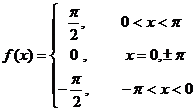
The Fourier series of
![]() ~
~![]()
The point x = 0 is the first type of discontinuity point , and its jump D = π![]()

![]()
The curve of y = s m ( x ) ( m = 1,2,3,4,5,6) is shown in Figure 11.2 .
There is a point column , , such that ![]()
![]()
![]()
![]()
At that time , the limit graph of s m ( x ) is shown in Figure 11.3 ( note the shape at the point x = 0 ) .![]()
5. Item-wise integration and differentiation of Fourier series
[ itemwise differentiation ] Suppose that the Fourier series of an absolutely integrable function over the interval is![]()
![]()
![]() ~
~![]()
![]()
Then whether it converges to f ( x ) or not , it can be integrated term by term . That is, for any interval ( where the following relation holds:![]()
![]()

[ Item- wise differentiation ] Assuming that the function is continuous on the interval , , and has absolutely integrable derivatives ( there may be a finite number of points without derivatives ) , then the Fourier series of the function can be obtained by the Fourier series of the item-wise differentiation , that is![]()
![]()
![]()
![]()
![]()
![]()
![]() ~
~![]()
It is not pointed out here whether the series on the right converges to or not , and specific judgments should be made for specific problems .![]()
Six, the Fourier series expansion table of the function
 1 o
1 o
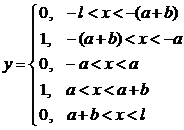
![]()
 2o _
2o _
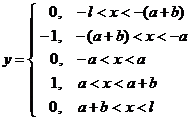
![]()
3o _

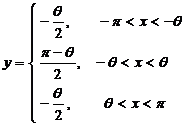
![]()
4o _

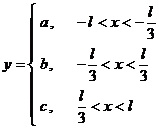
![]()
 5o _
5o _ ![]()
![]()
6 O


![]()
 7o _
7o _

![]()
 8o _
8o _
![]()
![]()
 9o _
9o _ ![]()
![]()
10o _

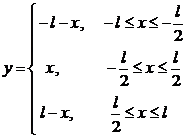

![]()
11o _ 
![]()
 12o _
12o _

![]()
13o _


![]()
![]()
14o _

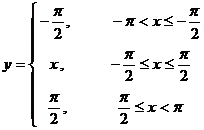
![]()
 15o _
15o _
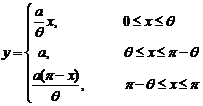
![]()
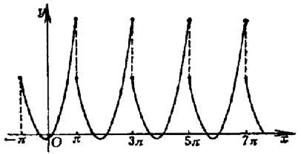 16o _
16o _ ![]()
![]()
17o _ ![]()

![]()
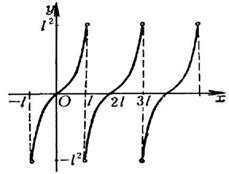 18o _
18o _

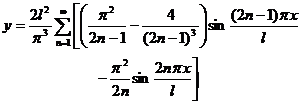
 19o _
19o _
![]()
![]()
20o _

![]()
![]()
21o _


![]()
 22o _
22o _
![]()
![]()
23o _ ![]()


24o _

![]()
![]()
25o _ ![]()
![]()
26o _


27o _ ![]()
![]()
28o _ ![]()
![]()
29o _ ![]()
![]()
30o _ ![]()
![]()
31o _ ![]()
![]()
32 o ( a ![]() is not an integer, the same below )
is not an integer, the same below )
![]()
33o _ ![]()

34o _ ![]()
![]()
35o _ ![]()
![]()
36o _
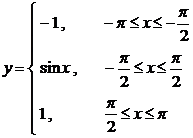

37o _

![]()
38o _

![]()
39 o ( k ![]() is a positive integer, the same below )
is a positive integer, the same below )
![]()
40o _ ![]()
![]()
41o _ ![]()
![]()
42o _ ![]()
![]()
43o _ ![]()
![]()
44o _ 
![]()
45o _ ![]()
![]()
46o _ ![]()

47o _ 
![]()
48o _ ![]()
![]()
49o _ 
![]()
50o _ ![]()
![]()
51o _ ![]()
![]()
52o _ ![]()
![]()
53o _ 
![]()
54o _ ![]()
![]()
55o _ ![]()
![]()
56o _ ![]()
![]()
57o _ ![]()

58o _ ![]()
![]()
59o _ ![]()
![]()
60o _ ![]()
![]()
61o _ ![]()
![]()
62o _

![]()
63o _

![]()
Seven, double Fourier series
Assuming that a bivariate function is absolutely integrable over a rectangular area , its double Fourier series has two forms .![]()
![]()
[ real number form ]
f ( x , y ) ~ ![]()
![]()
in the formula
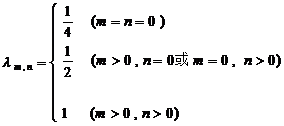
![]()
![]()
![]()
![]()
![]()
[ plural form ]
![]() ~
~
in the formula

[ Expand condition ] If the function satisfies the condition within the rectangular area R :![]()
(i) The sum of partial derivatives on R exists everywhere and is bounded; ![]()
![]()
(ii) The second partial derivative ( or ) exists and is continuous in some neighborhood of each interior point ( x 0 , y 0 ) of R.![]()
![]()
Then it can be expanded into a Fourier series .![]()